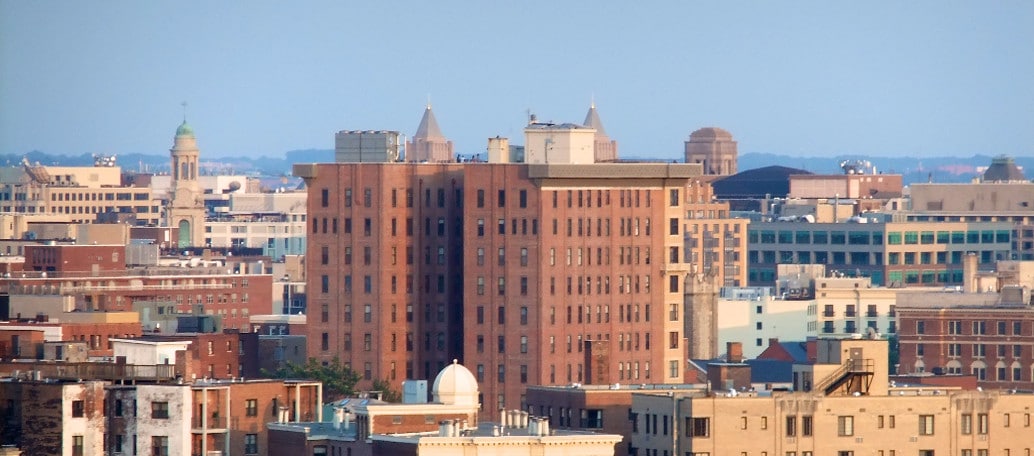On the same day that the U.S. Senate Energy and Natural Resources Committee voted to advance the nomination of a career fossil fuel propagandist to serve on the Federal Energy Regulatory Commission (FERC), the city council in the very city where this was happening voted to provide initial approval of the nation’s most aggressive renewable energy target, with 12 in favor and 1 absent.
Under the CleanEnergy DC Omnibus Amendment Act of 2018, Washington D.C. utility PEPCO would have to source 100% of the electricity that it uses to serve the city from renewables by 2032 – a doubling of the current 50%.
There is a tremendous irony in that the pro-coal Trump Administration could be governing out of a city which is pushing a faster move towards renewables than any state to date. But that’s just the beginning. It’s also a faster timeline than the renewable energy mandates in most of the 99 cities that have set targets. This includes San Jose and San Diego, California, which are aiming to reach 100% in 2050 and 2035, respectively.
Minimum of 5% local solar
As previously reported by pv magazine USA, this includes a minimum of 5% by solar, under a formula where if more solar is added, the mandate increases. This solar requirement also goes past 2032, and the bill mandates an increase until PEPCO reaches 1.68 GW of solar.
And while the rest of the renewable energy mandate can be met by renewables anywhere in the 14-state PJM Interconnection grid, all of the solar under this mandate must be built within Washington D.C. or in feeder lines in Maryland.
The nation’s capitol is only 61 square miles of land, and is entirely urban. “The challenge in DC from a development standpoint is that it is very small, and very densely populated,” notes Tony Clifford, the Chief Development Officer for Standard Solar and the former head of trade group MDV-SEIA. He says that this is expected to lead to a massive boom in rooftop solar in the district.
100% low-or-zero-emission vehicles by 2045
The 1.68 GW is enough solar to meet about 20% of the city’s current electric load, and given that the district houses 694,000 residents, the U.S. Congress and the offices of the federal government, this is no small amount of power. But that load is also set to increase, as an amendment tacked on to the bill yesterday will also require that all 50% of all buses, rideshares, and fleets of 50 or more vehicles in the city move to low-or-zero emission models by 2030, and 100% by 2045.
There isn’t a definition of “low-or-zero-emission vehicles” in the brief amendment. But given that the lifetime cost of ownership, including fuel and maintenance, for electric vehicles is already lower than that of internal combustion engine vehicles or hybrids, this could drive a massive boom in vehicle electrification in Washington D.C. This in turn will further add to the load that PEPCO must serve with renewables – and thus the opportunities for developers.
A test of the new Congress?
Under Washington D.C.’s process the bill must be reconsidered again on December 18, and then will go to DC Mayor Muriel Bowser (D) for approval, and Tony Clifford notes that Mayor Bowser has expressed support for solar in the past.
But the bill is not done there. Because Washington D.C. is the nation’s capitol and a federal district – not a state – the U.S. Congress and President have a unique ability to veto acts of the City Council. This means that the bill will go before the U.S. Congress for 30 working days, during which time both Houses have the opportunity to review the legislation and may pass a joint resolution opposing it, which would then go to President Trump who can approve or disapprove this veto.
The U.S. House and Senate will both be on recess after December 14, and the timeline of approval in the city means that this measure will go to the newly elected U.S. Congress after January 3. Therefore it will be presented to a U.S. House with a Democratic majority, with a number of progressive members who came in under the “blue wave” in the November 6 elections and are pushing the Democratic Party to endorse 100% renewable energy by 2030 and a “Green New Deal”.
This content is protected by copyright and may not be reused. If you want to cooperate with us and would like to reuse some of our content, please contact: editors@pv-magazine.com.









By submitting this form you agree to pv magazine using your data for the purposes of publishing your comment.
Your personal data will only be disclosed or otherwise transmitted to third parties for the purposes of spam filtering or if this is necessary for technical maintenance of the website. Any other transfer to third parties will not take place unless this is justified on the basis of applicable data protection regulations or if pv magazine is legally obliged to do so.
You may revoke this consent at any time with effect for the future, in which case your personal data will be deleted immediately. Otherwise, your data will be deleted if pv magazine has processed your request or the purpose of data storage is fulfilled.
Further information on data privacy can be found in our Data Protection Policy.